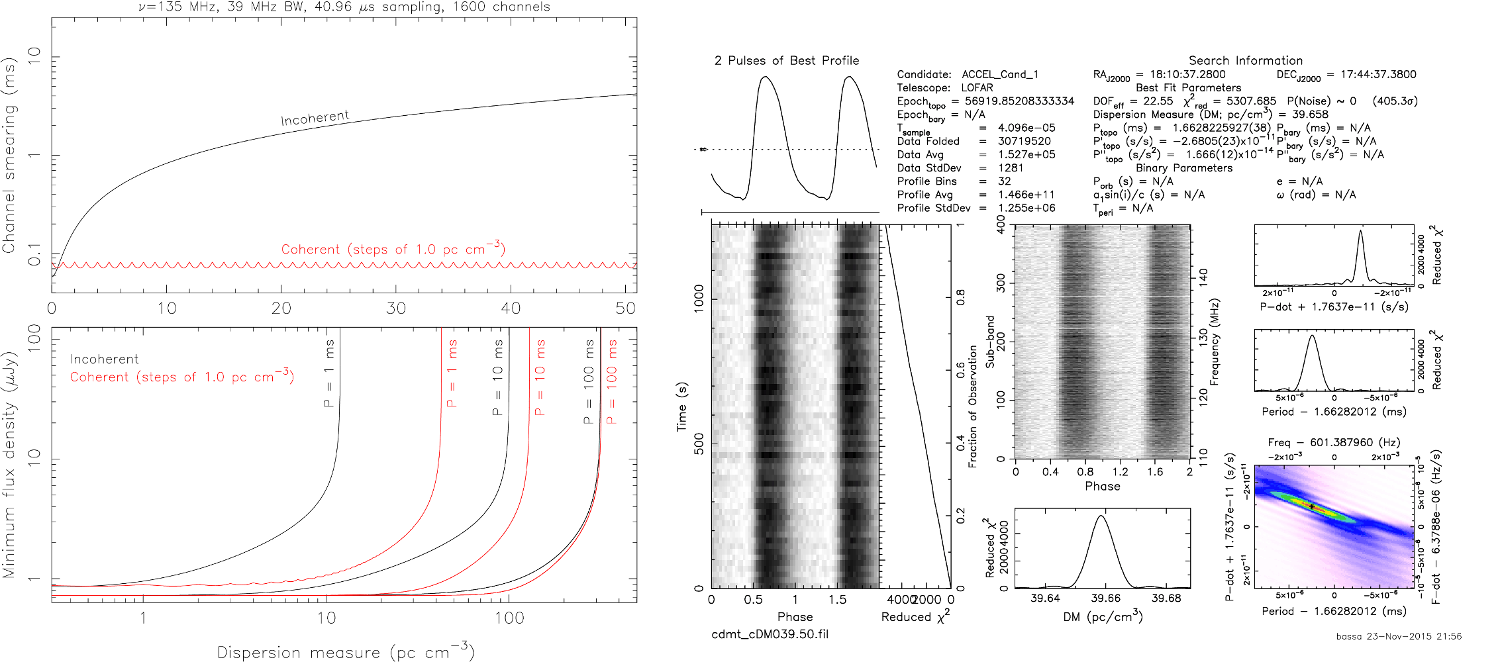Daily Image
01-12-2015Searching for pulsars with coherent dedispersion
| Submitter: | Cees Bassa |
| Description: | The dispersive effect of the ionized interstellar medium leads to frequency dependent delays in the arrival times of pulsed radio emission. As such, surveys for pulsars and fast radio bursts need to correct for this a priori unknown dispersion measure (DM) by computing many trial DM values. This is typically done through "incoherent dedispersion" where the timeseries in individual channels are shifted by a delay proportional to the trial DM. Though this approach works well at higher frequencies, at LOFAR frequencies the dispersive delay within a single channel can be large enough to smear out pulses. This greatly reduces the sensitivity to short pulses at high DMs like those of millisecond pulsars (MSPs) and fast radio bursts (FRBs). To enable LOFAR to find MSPs and FRBs, we have developed software that uses "coherent dedispersion" to correct for the dispersion. Coherent dedispersion works by convolving a Nyquist sampled timeseries by the inverse of the transfer function of the interstellar medium, completely removing the effects of dispersion. Because coherent dedispersion is computationally expensive, it is mostly used when observing pulsars for which the DM is known. Aided by the 600Tflops DRAGNET GPU cluster we now have the resources to compute coherent dispersion measure trials. Our software uses the DRAGNET GPUs to coherently dedisperse raw complex voltages to dozens of trial DMs, and subsequently channelizes, detects (converting to Stokes I) and rebits the data for each trial DM. Inspired by COBALT, we then use the 10G network of DRAGNET to transpose the trial DMs per subband to subbands per trial DM. Each of these coherent trials is then incoherently dedispersed around the coherent value and searched for period signals and single pulses. The panel on the top left shows the smearing due to dispersion within a 24-kHz channel in the case of incoherent dedispersion and coherently dedispersed trials separated by 1 pc/cc. The latter enables us to limit the smearing to less than 0.1 ms. The bottom left panel shows the improvement of this approach over incoherent dedispersion on the sensitivity for pulsars with different spin periods. The sensitivity at high DMs is now limited by scattering. A LOFAR survey (LC5_002) for millisecond pulsars associated with as of yet unclassified Fermi gamma-ray sources is presently ongoing and using this approach to generate coherently dedispersed DM trials. To our knowledge, this is the first time that any pulsar survey computes many coherent DM trials. The panel on the right shows the blind redetection of the test pulsar J1810+1744, a 1.66 ms pulsar in a 3.5 hour orbit at a DM of 39.66 pc cm-3. The nearest coherent dispersion measure trial was 39.50 pc cm-3. |
| Copyright: | Cees Bassa, Ziggy Pleunis, Jason Hessels, Vlad Kondratiev |
| Tweet |  |
